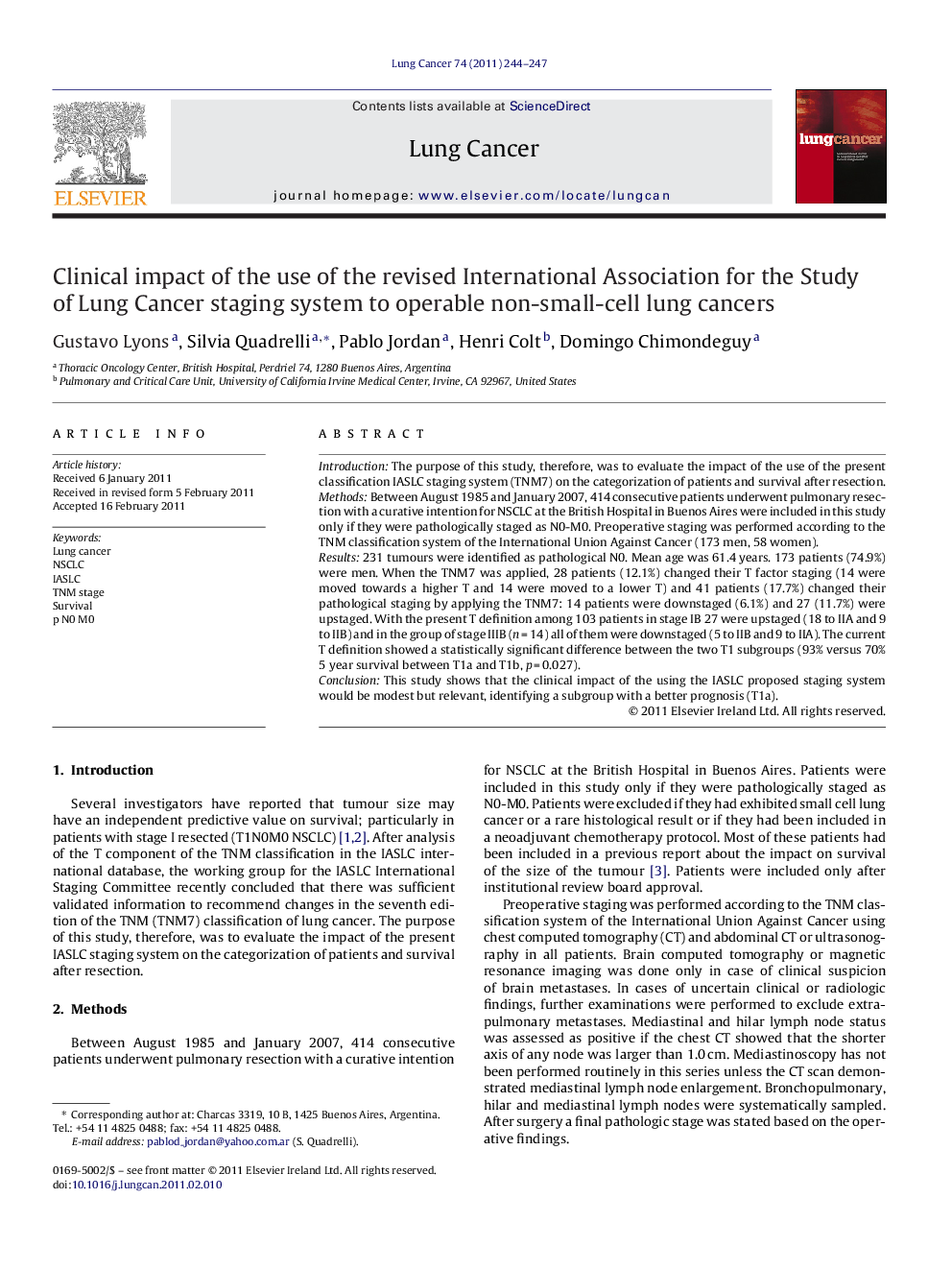| Article ID | Journal | Published Year | Pages | File Type |
|---|---|---|---|---|
| 2142605 | Lung Cancer | 2011 | 4 Pages |
IntroductionThe purpose of this study, therefore, was to evaluate the impact of the use of the present classification IASLC staging system (TNM7) on the categorization of patients and survival after resection.MethodsBetween August 1985 and January 2007, 414 consecutive patients underwent pulmonary resection with a curative intention for NSCLC at the British Hospital in Buenos Aires were included in this study only if they were pathologically staged as N0-M0. Preoperative staging was performed according to the TNM classification system of the International Union Against Cancer (173 men, 58 women).Results231 tumours were identified as pathological N0. Mean age was 61.4 years. 173 patients (74.9%) were men. When the TNM7 was applied, 28 patients (12.1%) changed their T factor staging (14 were moved towards a higher T and 14 were moved to a lower T) and 41 patients (17.7%) changed their pathological staging by applying the TNM7: 14 patients were downstaged (6.1%) and 27 (11.7%) were upstaged. With the present T definition among 103 patients in stage IB 27 were upstaged (18 to IIA and 9 to IIB) and in the group of stage IIIB (n = 14) all of them were downstaged (5 to IIB and 9 to IIA). The current T definition showed a statistically significant difference between the two T1 subgroups (93% versus 70% 5 year survival between T1a and T1b, p = 0.027).ConclusionThis study shows that the clinical impact of the using the IASLC proposed staging system would be modest but relevant, identifying a subgroup with a better prognosis (T1a).
